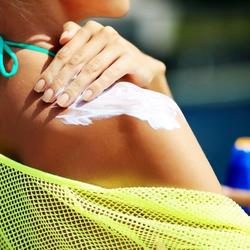BARDEEN RESEARCH GROUP

KMH
Kerry M Hanson129 Chemical Sciences951-827-3079 kerryh@ucr.edu Kerry provides expertise on sunscreens, including how they work, environmental effects of their ingredients, & their limitations.
|
Publications
Please see KMH's C.V.
Research
UV filter Photochemistry: UV filters are the molecules used in sunscreens to block UV light at the skin surface before it penetrates deeper into the skin. Many UV filters are photolabile, themselves breaking apart into photoproducts or sensitizing highly destructive reactive oxygen species (ROS) and free radicals (FR). Either effect represents a concomitant loss in efficacy of a sunscreen, and has recently led the FDA to call for more data on the safety of sunscreens.
We work collaboratively with industrial scientists to bring an academic research focus to issues that have a broad effect on public health, like
- Photostabilization of UV Filters like Avobenzone, Octocrylene and Octyl Methoxycinnamate
- Free Radical generation in the epidermis
- Penetration of UV Filters into the epidermis
From |
|
Thirty year academic research career focusing upon photochemistry of intrinsic and extrinsic epidermal chromophores (urocanic acid, UV filters, ROS sensitization) and epidermal environmental conditions (stratum corneum pH, ozone). Developed a two-photon fluorescence lifetime imaging methodology to visualize the stratum corneum pH gradient. Visualization of UV induced ROS as a function of epidermal depth and keratinocyte location using fluorescence microscopy techniques. Identified conditions by which FDA-approved UV filters can sensitize ROS in individual epidermal layers above intrinsic epidermal levels.
Research Highlights
- Discovered that commonly used sunscreens can generate highly destructive reactive oxygen species in epidermis.
- Showed that antioxidants used in topical skin formulations reduce the number of ROS in both anucleated and nucleated epidermal layers.
- Dissemination of two-photon fluorescence imaging and lifetime methods to international personal care companies leading to the development of sunscreen products and ingredients.

